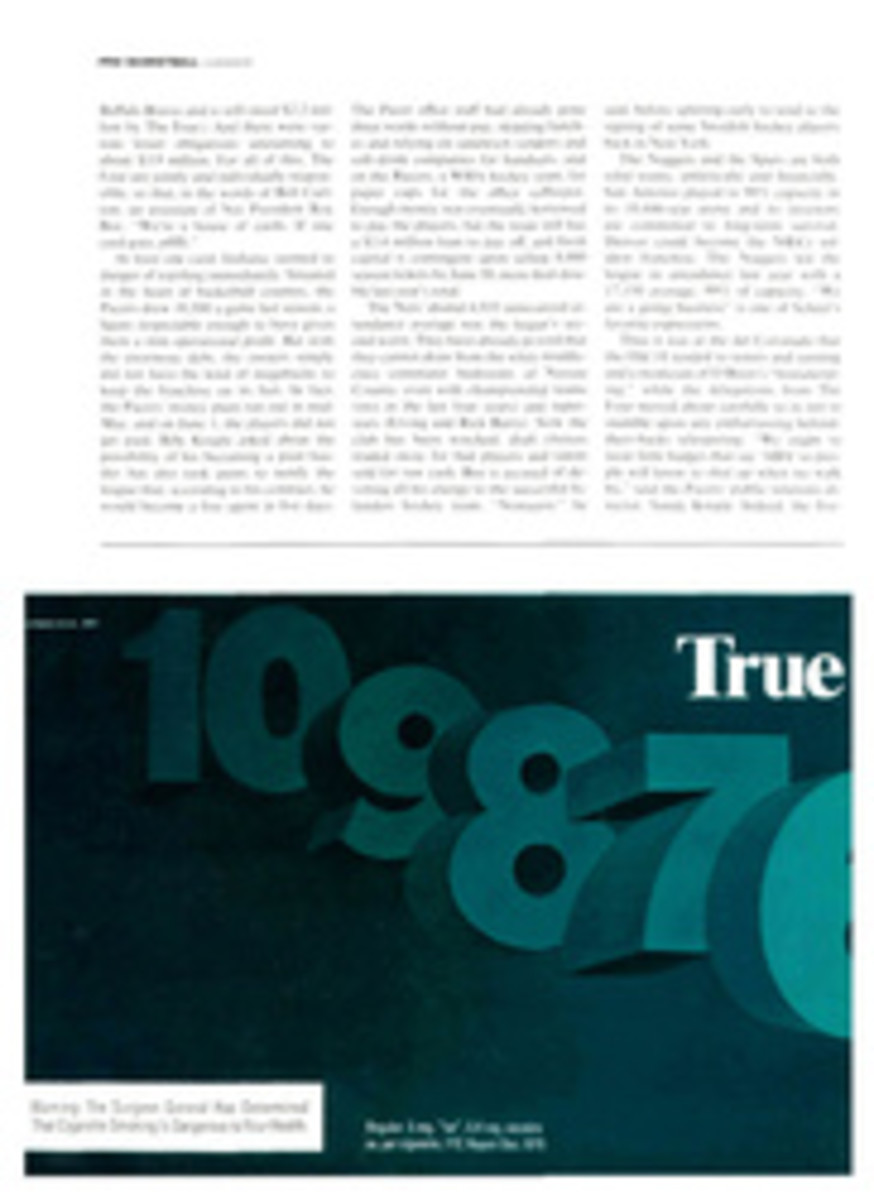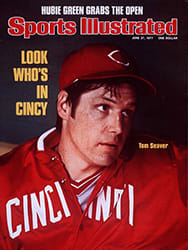
AS A FANTASY "ROCKY" IS FINE, BUT THE BIG FIGHT IS STRICTLY HOLLYWOOD
Some may not recognize how inauthentic the boxing in the Academy Award film Rocky is, but this should be pointed out, because it bears on the film's "meaning." Sylvester Stallone's Rocky styles himself after Rocky Marciano, a short-armed hooker who threw punches from every point of the compass. Marciano knocked out Joe Louis with a straight right hand, and he knocked out Joe Walcott in their first fight with one of the hardest right hands in heavyweight history. It ranked with the right with which Louis hit Jim Braddock and the short right with which Ali decked Sonny Liston in Lewiston. Although Referee Joe Walcott and a lot of other people didn't see it, the latter was no "phantom punch." It sent Liston tumbling to the canvas in a heap.
But while Rocky Balboa, using upper-cut body punches, might be able to smack standing beef, as he did in the movie, he could not hit most good heavyweights, unless they leaned in, elbows akimbo, like the Apollo Creed of the film. One of the few good fighters as awkward as Balboa was Rocky Graziano. But Graziano could hit to the head with a left hook and an overhand right, punches not in Balboa's repertoire.
Auditors will argue that it sounds as well as looks as though people are really getting belted in Rocky, but despite the seeming authenticity of the blows, no heavyweight champion is going to get hit by the sucker punch Rocky lands early in the fight. You might land a punch like that in a Jersey bar—Galento's or Chuck Wepner's—but not in a fight for the big prize. Nor is a smart fighter going to lean into the only punch his opponent can throw. Nor is a referee going to tolerate such a blood-bath. Nor will a corner inhabited by Burgess Meredith permit it.
Hollywood seldom does well with fights. In Champion, supposedly, some closeups were filmed by having the actors push their gloves into their opponents' faces, then yank them away. Reversing the film made the blows seem real. But Kirk Douglas, a good athlete, did not move or hit like a fighter. The ending—Kirk on one knee listening to an announcer scream "He's finished!," then getting up to knock his man out, then dying—was hokey as the devil. True, the director of Somebody Up There Likes Me studied the Zale-Graziano films and left his film Tony dangling like a ragdoll over the ropes, just as Graziano left him at the end of the second fight. But in The Harder They Fall, Budd Schulberg's Argentine version of Primo Carnera didn't look at all like a fighter. Neither, for that matter, did the real Primo, as Max Baer demonstrated.
Rocky provides psychic compensation for America. Rocky gets his shot through an improbable sequence of events dictated by the megalomania of a mini-Ali. Ali does fight some silly fights these days, but Jimmy Young is skillful, as was Jimmy Braddock—remember, he outstabbed an overconfident Baer and almost knocked out Louis. Rocky gets his payday—nowadays losers win—and his girl is transformed from a nearsighted mute to a pretty butterfly and gets her handsome Italian stallion. (Note Rocky Balboa's classic profile. After 70 pro fights?)
The film is fantasy, and as such probably does no harm. The best moment, for me at least, is Creed's entrance as George Washington crossing the Delaware to the Spectrum. Intentional fantasy, and very funny. Was it a comment on the film and the way we are to take it? If so, the commentary is valid.

